If you are looking for information about sloths in Costa Rica, you are in the right place.
In this article we share interesting facts about these animals, their characteristics, behaviors, habitat and places where you can see them.
Closest over the counter to viagra take cialis viagra together buying viagra from indiaIf you are on vacation in Costa Rica, the sloths tour is an activity that you should not miss. Seeing these animals is something wonderful and a unique experience.
Species of Sloths in Costa Rica
In the world it is possible to find 6 species of Sloths. However, in Costa Rica we only have two of them.
The brown-throated three-toed sloth (Bradypus variegatus) and Hoffman’s two-toed sloth (Choloepus hoffmanni).
Although there are similarities in their general appearance, they are very different in their anatomy, temperament, and care needs.
The Two-toed Sloths (Choleopus hoffmanni)
Hoffman’s two-toed sloths (Choloepus hoffmanni) are nocturnal, meaning they are active at night.
These sloths have 2 “fingers” on their “hands” and 3 “toes” on their “feet”.
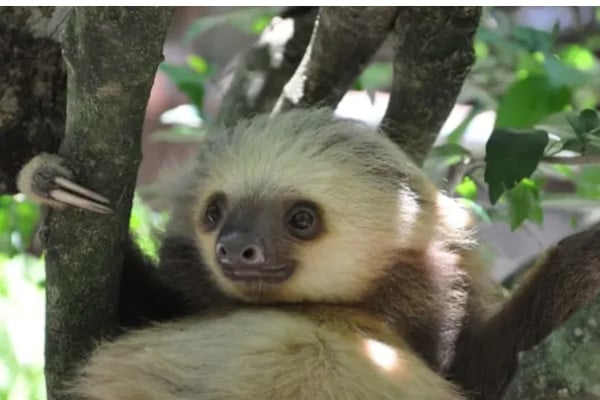
They are often recognized by their pig nose with hair that tends to be blonde or brown.
It is difficult to identify the sex of a wild two-toed sloth from a distance because its sexual organs are hidden within its fur.
The three-toed sloths (Bradypus variegatus)
The brown-throated three-toed sloth (Bradypus variegatus) is diurnal, meaning they are active during the day.
These sloths are smaller than the two-toed sloth. Since they are more active, they consume more energy.
These sloths have 3 “fingers” on their “hands” and 3 “toes” on their “feet”.
They are often recognized by their “Pura Vida Smile”, a black mark on their mouth and a black “mask” around their eyes.
His hair is colored “salt and pepper”, which means it is black, gray and white.
Although they do have internal sex organs, it is possible to determine the gender of a sexually mature three-toed sloth by a very distinctive marking on its back.
A premature or female three-toed sloth will have a patch of white hair with a black line running through it.
Whereas a male three-toed sloth will have a patch of orange hair with a brown line down the middle.
They are also known as Brown-throated Sloths and have a small tail.
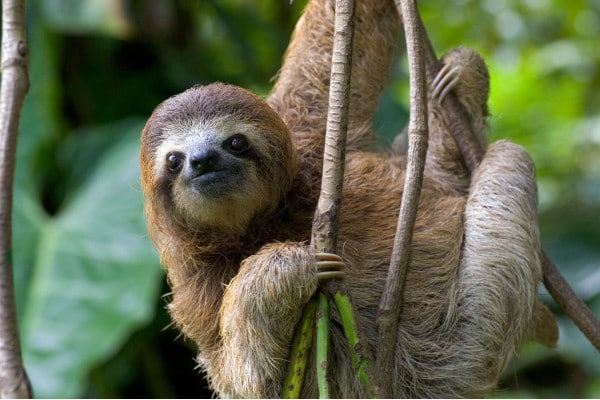
In this way you will be able to have an idea of what they are like and be able to differentiate once you see them, either on tour or when they cross the roads that divide their habitat.
In general, these mammals spend most of their time in the treetops.
Both the two-toed sloth and the three-toed sloth have very similar behavior.
Where do Sloths live in Costa Rica?
In Costa Rica it is possible to find them in wooded areas and wetlands, especially where Guarumos trees are found.
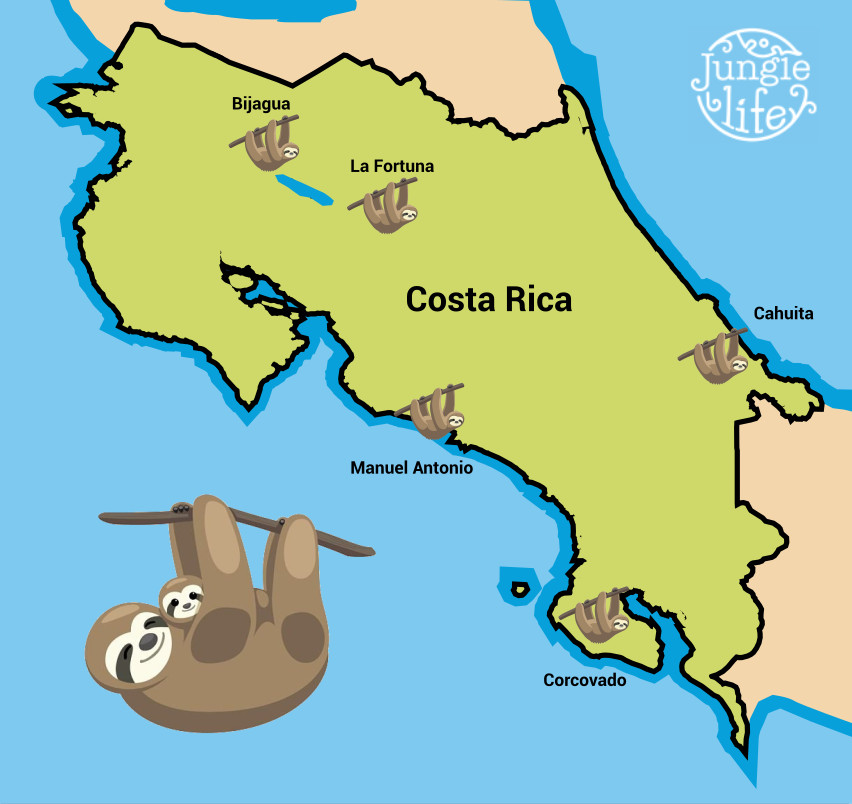
Some studies have shown that groups of sloths tend to congregate in places where these trees abound.
The Guarumos trees are part of their diet and breeding area.
Also, there are several sloth sanctuaries in the territory of Costa Rica, which seek to protect these species and raise awareness about the care and respect that we must have for them.
Occasionally, it is possible to see a sloth crossing the road. This is very dangerous for them since due to their slowness they are in great danger of being run over by cars.
For this reason, it is important to take special care when traveling through Costa Rican routes, in order to avoid damaging the area’s spices.
Sloths Territory
Sloths are animals that live in tropical, hot and humid climates.

The territory of the sloths covers the area of Central America, Colombia and northern Brazil in the Amazon forests.
In Costa Rica, they are found mainly in the North Central Zone and the Pacific Coast, especially the southern zone of the Osa Peninsula.
Reproduction and years of life
Sloths reach the right age to mate at 4 years old.
From this moment they will begin the adventure of looking for their partner. This is possible thanks to the sound that the female emits.

Sloths sometimes venture across rivers by swimming, with the sole purpose of reaching their beloved.
These animals live from 10 to 20 years, although some reach 30 years.
Why sloths are slow?
Few animals on the planet are as slow as the sloth. Have you ever wondered what is causing this behavior?
According to studies, there are two main reasons why sloths are slow
Low calorie diet
Its diet is based on leaves, flowers and tender stems, which it easily obtains from the tree where it decides to live.
These foods lack energy and nutrients so their movements are slow.
The sloth’s metabolism is slow. It is even known that it takes up to a month to digest some of the foods.
Temperature Regulation
Sloths are good at maintaining their energy and regulating their temperature.
Due to their low metabolism and the type of food they do not require to invest much energy in regulating the temperature.
The tropical areas where they usually live are typically warm and humid climates. This means that temperature regulation does not require more effort and energy.
Interesting sloths facts
As we mentioned earlier, sloths spend most of their lives in the treetops. However, there is only one moment when they risk their lives and descend from the trees.
Once a week they come down from their tree to relieve themselves.

The weekly crossing is very risky. In fact 50% of sloth bear deaths occur when they come down from trees.
Another interesting fact about sloths is their ability to swim. Although on land and in trees they are usually slow, their swimming speed is 3 times faster.
Also, it is known that these animals can hold their breath for almost 40 minutes.
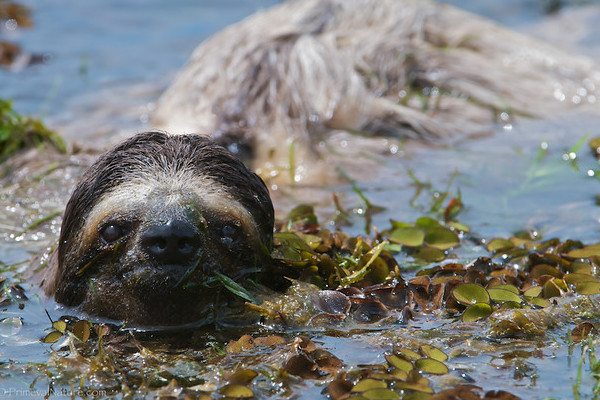
Sloths ancient family
Some people believe that sloths are related to eather monkeys, marsupials or even bears.
The truth is that they are not. Instead, sloths belong to the family of xenarthra, an anciant and rare family of mammals.
The word xenarthra comes from greek language, and it means “strange joints”. This is because all of its member share unique joints in their lower spine.
By the matter of fact, the family of xenarthra is one of the oldest group of mammals left alive today and includes the sloths as well as armadillos and anteaters.
Sloths therefore are xenarthrans, and their closest relatives are anteaters and armadillos.
They share the característics of large, curved claws and powerful forelimbs for digging, which are common xenarthran traits.

Sloths National Symbol of Costa Rica
In case you didn’t know, the sloth bear was declared a national symbol of Costa Rica on August 24, 2021.
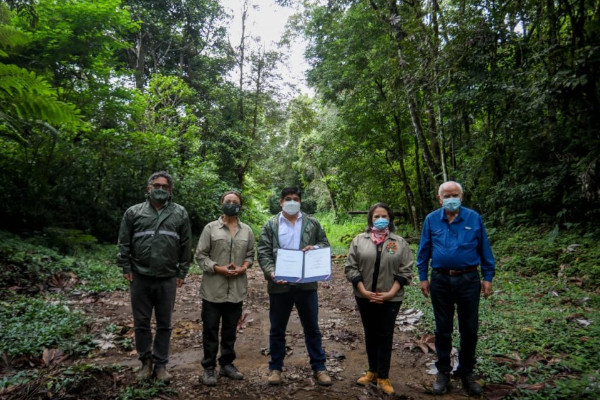
This act is extremely important, since it is one more step towards the preservation of this species in the country.
Likewise, the declaration promotes the protection and preservation of wildlife in the country.
Where to see the Sloths in Costa Rica
In Costa Rica they are found in rainy and humid areas, but you can also go to sloth bear sanctuaries guided by specialized personnel from these places.
Where should I go to see sloths in the wild?
If you want to see the sloths in their wild state, it is best to hire a tour with a professional.
In this way, the experienced guide will be able to easily identify the animals in the trees and provide you with additional information about them.
Some places like Bijagua in the north and the Osa Peninsula in the South Pacific are good places to find sloths.
Best option: Sloth wild tours in Costa Rica, Prices
A tour in the rainforest is the best option, because it will allow you to observe the animals in their natural habitat, without human intervention.
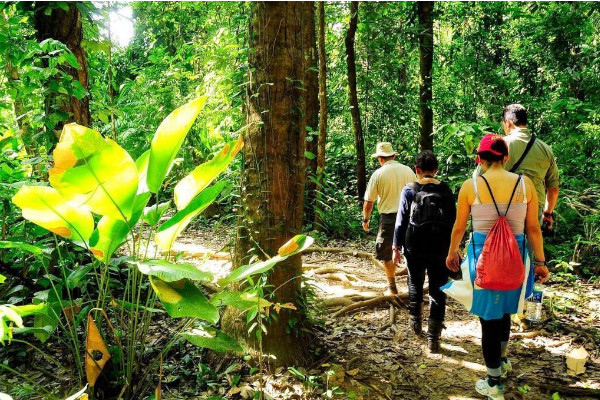
At Jungle Life Costa Rica we have experienced tour guides who will show you and explain everything you need to know about sloths.
Contact us today. We are sure it will be an unforgettable experience.
Join our Rainforest Tour and see the Sloths!
Sloth bears are fascinating animals. Learning from them allows us to promote the protection of wildlife.
Other options: Sloths sanctuaries in Costa Rica Price list
A sanctuary is basically a place where animals that have been through abuse, abandonment, or accidents can find a safe place.
Thanks to these places, animals can have a second chance to live freely for the rest of their lives.
In Costa Rica, there are some sloth sanctuaries open to the public.
| Sanctuary | Adult Price | Child Price |
| SLOTH SANCTUARY OF COSTA RICA | 28USD | 15USD |
| LA MARINA WILDLIFE RESCUE CENTER | 10USD | 8USD |
| KIDS SAVING THE RAINFOREST | 60USD | 45USD |
| THE TOUCAN RESCUE RANCH | 62USD | 32USD |
| ANIMAL RESCUE ZOO AVE | 30USD | – |
However, in the sanctuaries you will be able to find the sloths in habitats conditioned by the human being.
If you want to meet these animals in their wild state, it is better to join a Sloth Tour.
Frequently Asked Questions about Sloths
Can you touch sloth bears?
It can only be touched by specialized personnel, they are wild animals and must be respected, even though they seem cute to us.
Are Sloths dangerous?
No. Sloth bears are not dangerous. Although the claws on their fingers could be intimidating, in reality these animals are peaceful and solitary.
To defend themselves from predators and intruders they often scratch and bite. However, their passive and slow behavior make them easily evaded.
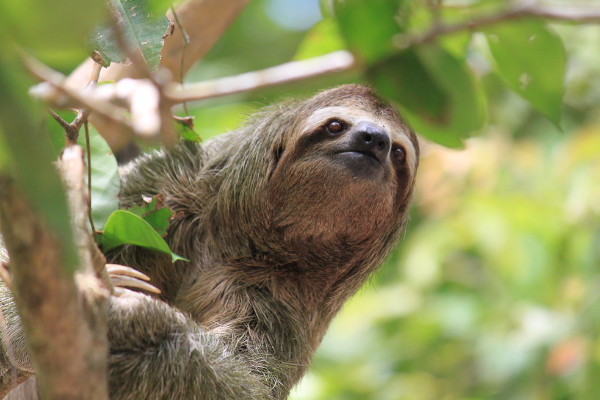
Is it only in the sanctuaries that I can see sloths?
No, you will also be able to see them in their natural habitat, in the wooded areas, only it would depend if one appears when you are around.
But if you want to ensure a sighting we recommend you schedule a Private Tour with tour guides who know the area.
Are sloths endangered?
In Costa Rica, sloths are a protected animal and are not in danger of extinction.
However, there are other countries such as Panama and Brazil, where sloths are in danger of disappearing.
What are the predators of the sloth bear?
The main predators of sloth bears are the harpy eagle, the constrictor snake, the jaguar and the puma.
It is interesting that of these 4 predators, 3 are endangered.
What to do if I meet a sloth bear?
Just avoid touching him and make sure he won’t be hurt. If the sloth bear is crossing a street, wait and inform others to avoid accidents.
Enjoy the moment and avoid interfering with the animal habitat of the sloth bear.
Sloths in Costa Rica – Summary
Sloth bears are fascinating animals that live in tropical forest areas, mainly in warm and humid places.
They are slow due to their metabolism and very good swimmers
Although they are not in danger of extinction, Costa Rica has made an important effort to preserve them. He has even named them his national symbol.
In Costa Rica, you can see sloths in two places: sloth sanctuaries and their natural habitat.
Seeing the sloths in the natural forest is much more interesting, but it is advisable to join a sloth sighting tour so as not to miss all the details.
If you want to participate in a sloth tour, do not hesitate to contact us. We are sure it will be a unique experience.

